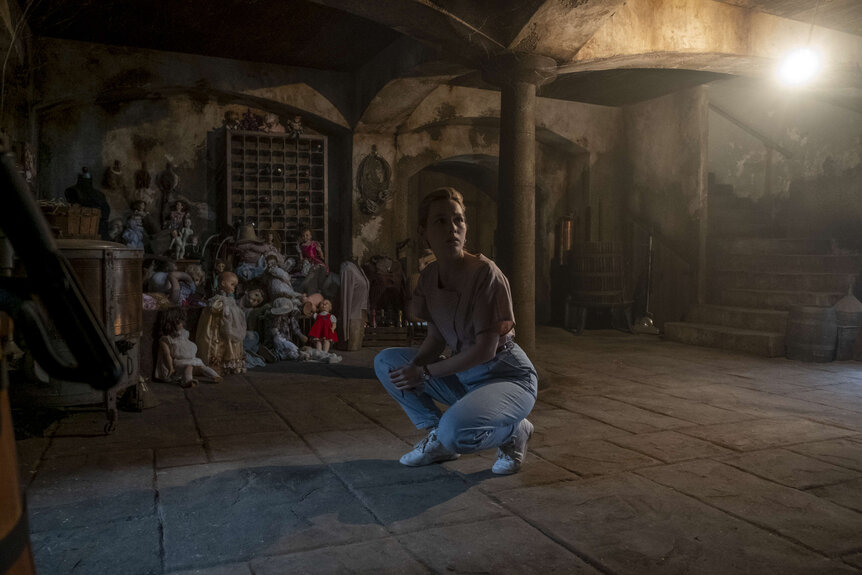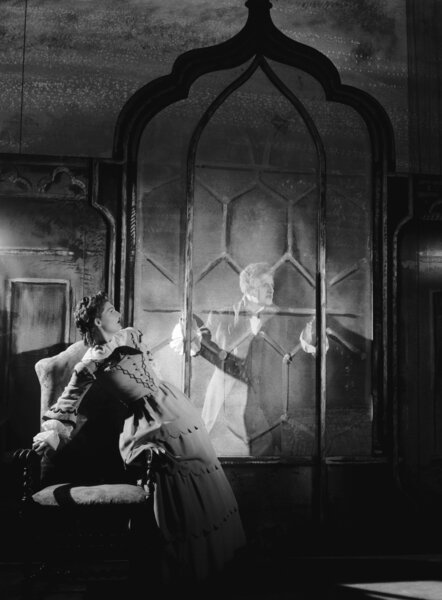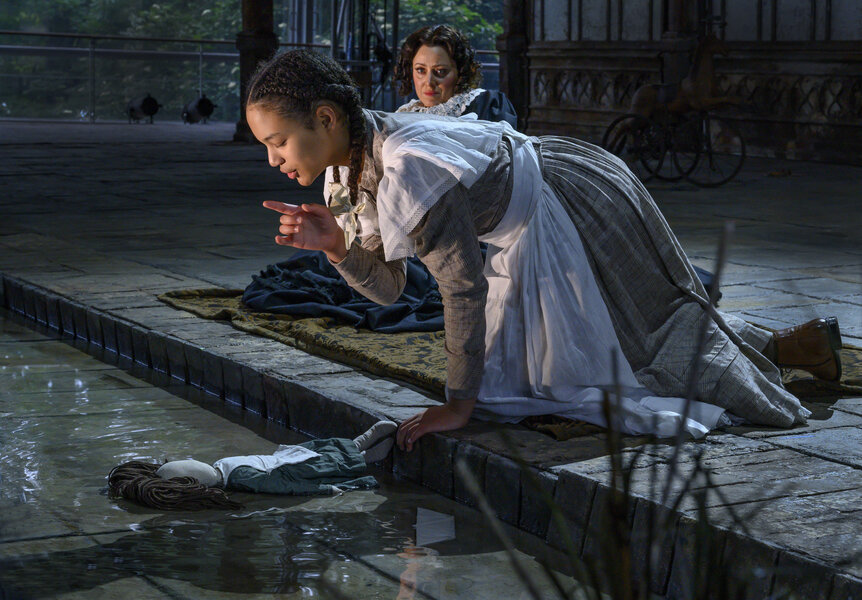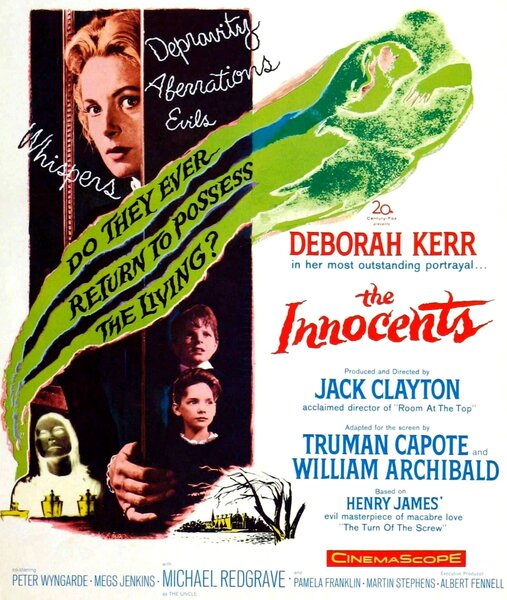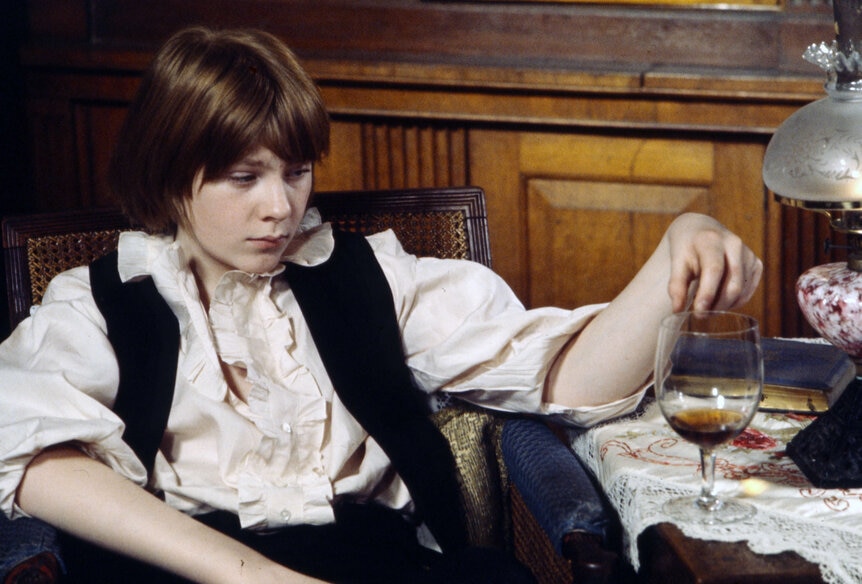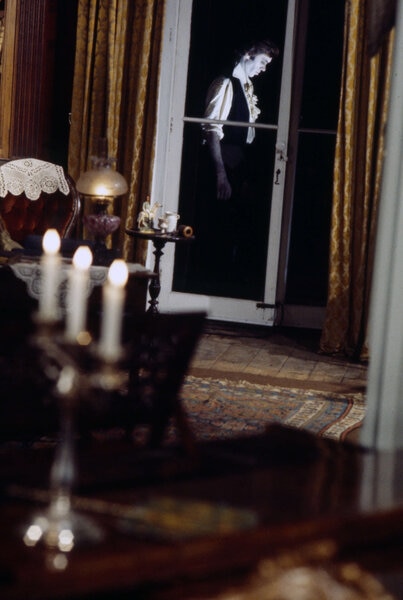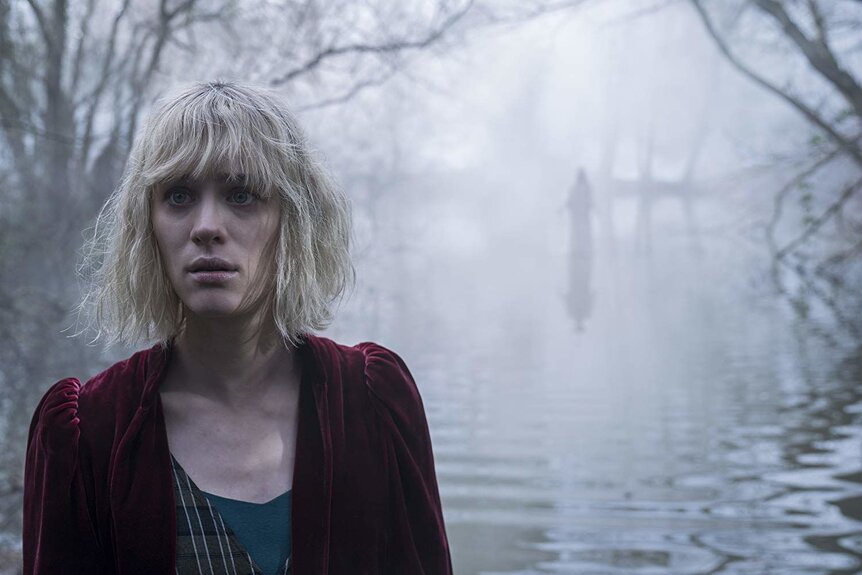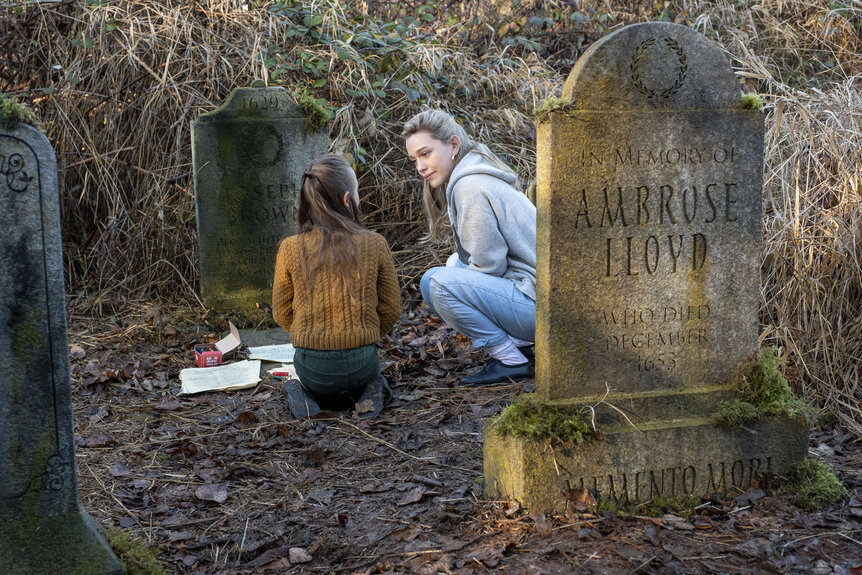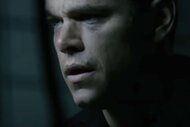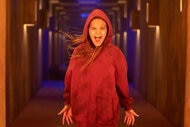Create a free profile to get unlimited access to exclusive videos, sweepstakes, and more!
From The Innocents to The Haunting of Bly Manor, the timeless appeal of Henry James
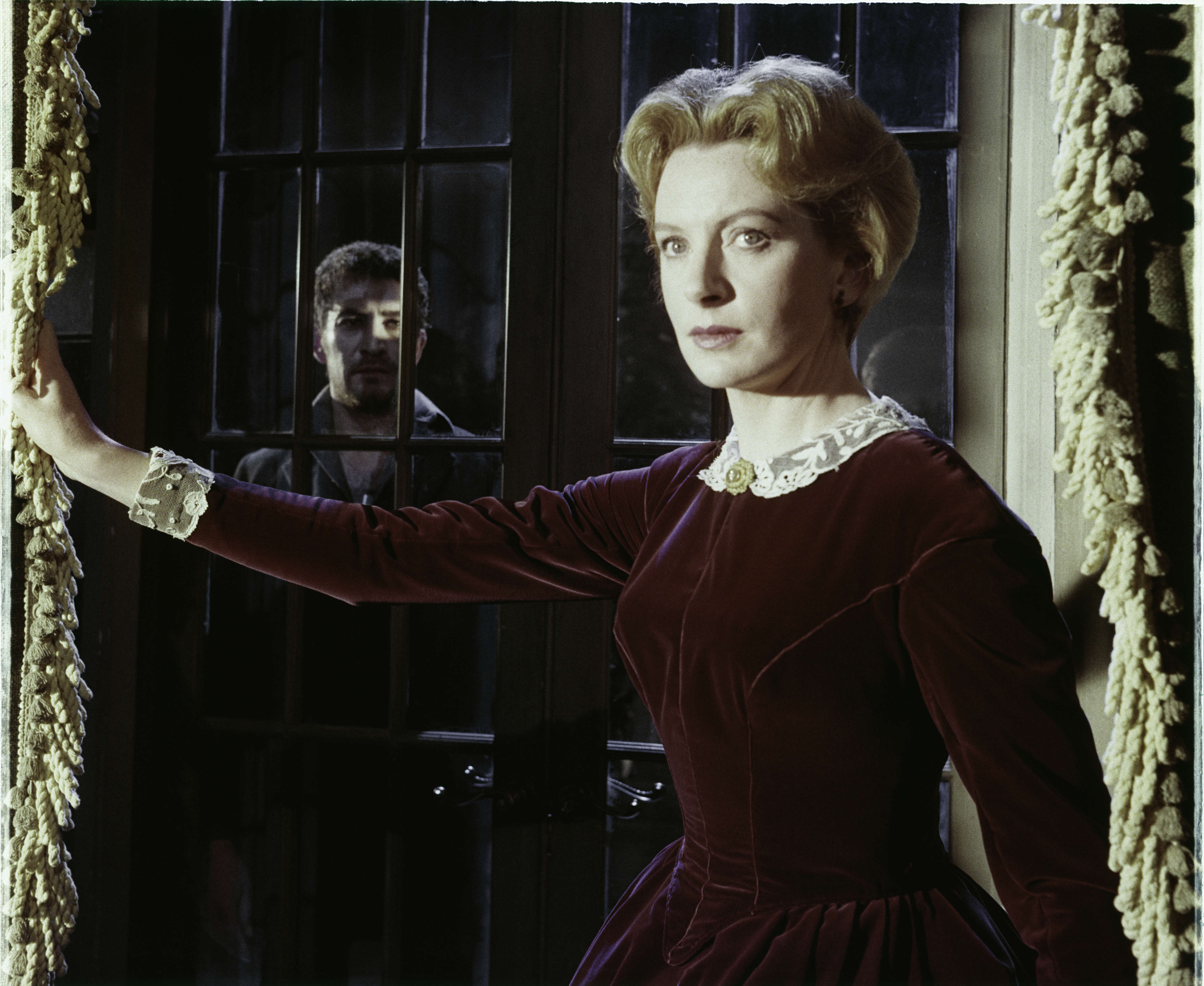
Some stories seemingly never get old, which is why there have been numerous adaptations of Shakespeare's plays, Jane Austen novels, and Sherlock Holmes adventures. Filmmakers are drawn to these familiar worlds because they offer the chance to imbue a new perspective through setting, period, and interpretation. Audiences love to be scared, so it is hardly surprising that horror is a repeat creative source. Whether Mary Shelley's Frankenstein or Bram Stoker's Dracula, these monster tales have inspired as long as cinema has existed. Scary movies are revived and rebooted, in part, because of the appetite for frightening material that plays on audience expectation at the recognizable unfolding terror.
Henry James' classic ghost story The Turn of the Screw has been adapted for the stage and screen, and in Spanish, German, French, and Italian (to name a few TV and film non-English speaking versions). Earlier this year, The Turning set the familiar story in mid-'90s America, whereas Netflix's The Haunting of Bly Manor is opting for '80s England. But why has this particular 1898 novella captured the attention of so many?
Ghostly narratives endure for a variety of reasons, including the obvious fright factor and because people want to believe (or disprove) this lingering presence. "It's more a story with a ghost in it. The ghost is just a metaphor," Edith explains in Guillermo del Toro's 2015 gothic horror romance Crimson Peak. Even though she has witnessed a spectral entity, she describes the supernatural force in her story as a metaphor for the past. Horror is often allegorical, which is another big draw for storytellers and audiences alike. The symbolism and ambiguous Turn of the Screw conclusion ensure it is still debated and new versions of this haunted house (or haunted mind) scenario continue to be made.
Radio, film, theater, opera, and TV have all tackled this spellbinding plot that refuses to lay out a neat conclusion. There is no definitive answer regarding the mental health of the protagonist nor the existence of actual evil spirits. Undoubtedly, this is part of the storytelling appeal across multiple media, including Benjamin Britten's 1954 opera (a 2019 version was extremely well received) and the Truman Capote co-written The Innocents.
Bly Manor is a beautiful home that doesn't instantly conjure haunted mansion vibes when the new governess first sees it. Hired to look after two orphaned siblings, Flora and Miles, the unnamed and inexperienced protagonist is employed by their uncle, who has little interest in taking a hands-on guardianship role. Instead, he employs the necessary staff to handle his wards at the remote estate. Her predecessor was embroiled in a torrid love affair with another employee and both are now deceased, which only adds to the intrigue and capacity for chills.
The governess becomes convinced spirits haunt the grounds and are intent on harming the children from beyond the grave. No other person backs up the governess's sightings, and James refuses to confirm whether it is madness or an actual haunting. Did young Miles die at the end because of her actions, or did a nefarious force cause this tragic conclusion? "The reader in effect becomes a jury of one. He or she must determine the governess's guilt or innocence," writes Brad Leithauser in a 2012 New Yorker essay.
The second half of the 20th century is littered with Turn of the Screw adaptations that sometimes offer up conclusive ends, but more often than not play on the lack of resolution. Not everyone believes in ghosts, so the madness theory is just as prevalent. The screw being turned is the reader as much as the characters at the heart of this chilling account. James' novella opens with a fireside gathering, an ideal location for the customary sharing of spooky yarns. This particular account is set up to be something so dread-inducing that the unnamed man is the only person who has heard it. "It's beyond everything. Nothing at all that I know touches it," the man intones in a manner that whets the appetites of all present. His recital of the governesses' terrifying encounter suggests that he believes her version of events, but this doesn't mean the reader has to. When James wrote this story on the eve of a new century, psychoanalysis was taking hold and Freud had co-written Studies on Hysteria. The ghosts of the mind were becoming just as potent as other hidden monsters that gothic horror favors.
"James is trafficking in openness; readers can shift, at whim, from ghostly tale to character study," Leithauser explains. The duality of the form and themes only add to its popularity. Yes, it is a scary tale about the entities that linger in the shadows or stare in from outside — the creepy image of Quint at the window is prevalent —but it is also a depiction of repression and the corruption of innocence by mortal hands.
In 1950, Harold Pinter directed The Innocents on Broadway. Adapted by William Archibald, The New York Times sang its praises, saying, "At last we have a horror play that adults can admire and enjoy." Brooks Atkinson's review points out that James tried to adapt the story for the stage but failed. The eerie mood is vital, which is something this play and the movie adaptation have in droves. Archibald wrote to dispel the so-called confirmation regarding James' authorial intent that suggests it was madness caused by "sex-repression" all along. He asserts the text also backs up the presence of ghosts, such as the governess describing the deceased Quint despite having never seen him. This central debate underscores why it has been such a fruitful source for the stage and screen.
Just over a decade later, Archibald adapted his play into a film script of the same name. Truman Capote was brought on board (and given a co-writing credit) to "preserve and even to enhance the inherent ambiguity of the original short story." The Freudian subtext and sexual repression were enhanced in this extensive rewrite, while also effectively portraying some truly haunting scenes. Director Jack Clayton juxtaposes the bright sunshine days with the terrifying nighttime interior, in a similarly affecting fashion as James weaves his words in the text. Despite some mixed early reviews that suggest it doesn't quite hit the mark — psychologically or on the scare scale — it is now considered a masterpiece of the haunted house genre.
Since the 1950s, The Turn of the Screw has pretty much been remade every decade. As with English language versions, the title is sometimes given a more contemporary or recognizable title, including Die südigen Engel (The Sinful Angel), Através da Sombra (Through the Shadow), and Il mistero del lago (The Mystery of the Lake). A haunted house is just as scary in the 19th century as the 20th, and the setting is malleable. The universal narrative aspect can be identified by how many versions there have been across the globe. Dolls and windows are repeat motifs that weave their way across the Turn of the Screw adaptation tapestry. Both elevate the scares through their familiarity to all, while providing an access point for malevolent forces to enter.
Perhaps one of the most unexpected connections is when '60s gothic daytime soap opera Dark Shadows turned to this story for a 70-episode arc that featured flashbacks to 1897. A malevolent spirit called Quentin (aka Quint) started communicating with children David and Amy. The bare bones of the story are represented here, but, notably, Dark Shadows creator Dan Curtis directed the 1974 ABC TV adaptation of his beloved Turn of the Screw.
More recently, the novella has been made for the BBC starring Michelle Dockery, which shifts the action from the original 1840s setting to the 1920s. Opening in a sanatorium, the former governess is being treated as a result of the events at Bly Manor. In this version, she is considered mad but the ghostly element is confirmed. By marrying both aspects, it loses the ambiguous heart of the story that makes it so effective (and enduring).
For a clear-cut explainer, The Nightcomers is a 1971 prequel to The Innocents featuring Marlon Brando as Peter Quint when he is alive and well. In this version of the story Miles and Flora murder Quint and their first governess Miss Jessel, after they are fired and the children believe their horrific course of action is a signal of love.
The 2020 movie The Turning went into development in 2016, but a change in director, script draft, and name — it was originally called Haunted — was part of the production woes. Mackenzie Davis starred in the eventual adaptation as Kate, which features Finn Wolfhard as Miles (the It actor adds another horror to his impressive résumé).
While the film itself doesn't hit the heights of the material — and adds a subplot about Kate's mother suffering from delusions — the soundtrack scored some '90s legends like Courtney Love and Kim Gordon to match the period. There are still ways to come to this story from new angles even if all the components don't connect.
Netflix's The Haunting of Hill House drew on Shirley Jackson's 1959 novel of the same name; now horror maestro Mike Flanagan is going back even further into the vault for the next part in the Haunting anthology series. The Haunting of Bly Manor gets its foundation from The Turn of the Screw, but he is also weaving in James' sinister doppelgänger depiction in "The Jolly Corner" and "The Romance of Certain Old Clothes" into this narrative. Set predominantly in 1987, the setup is still rooted in James' original text.
Loss and love are two cornerstones to the creepy-looking series, which Flanagan promises will incorporate the background scares that made Hill House such a terrifying blast to watch. Speaking to Vanity Fair, the showrunner revealed how the background spirits will differ this year. "And very much unlike the first season, they're actually going to be explained. By the end of the season, you're going to know who they are and why they're there." What this means for the ambiguous ending of the James book is unclear, but the potency of Henry James' ghost stories is still strong more than 100 years after publication. You don't need to be gifted with second sight to understand why The Turn of the Screw still has the power to haunt contemporary audiences.
